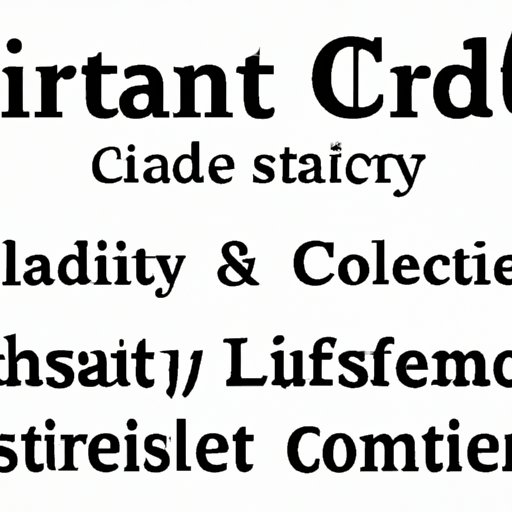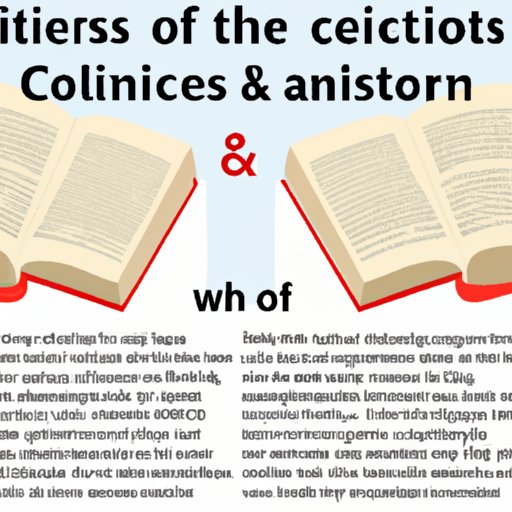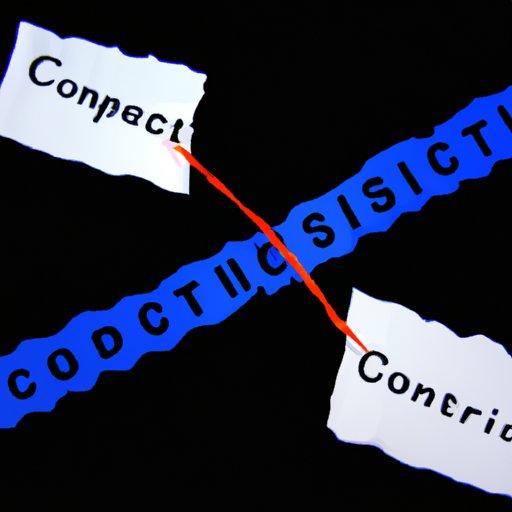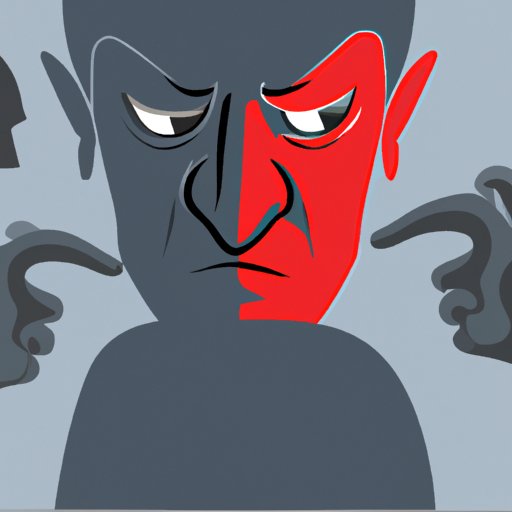Introduction
Conflict is an essential element of any narrative, be it a novel, play, movie, or television show. Conflict is what keeps readers engaged and provides tension to keep them turning the page. But what exactly is conflict in literature? And how does it impact the story?
Conflict in literature can be defined as the opposition between characters, ideas, or forces that drives the plot forward. It can take many forms, from person vs. person to person vs. self. Conflict can be used to establish character development, create tension, and foreshadow events in the narrative. In this article, we will explore the different types of conflict in literature, how it impacts character development, theme, and tone, and how it is used to create suspense.

Analyzing Conflict in Literature: A Comprehensive Overview
In order to fully understand the impact of conflict on literature, it is important to examine how it drives the plot and establishes character development. Conflict is the engine that drives the plot forward, providing tension and excitement. Without conflict, there would be no story. It is the catalyst for change, introducing new obstacles and challenges for the protagonist to overcome.
Conflict is also essential in establishing character development. Through conflict, characters are forced to confront their fears and weaknesses, ultimately leading to growth and change. Conflict allows readers to get to know characters better and understand their motivations. It can also be used to foreshadow events in the narrative, as well as create tension and suspense.
Finally, conflict has a major impact on the theme and tone of the narrative. Conflict can be used to explore themes such as power dynamics, morality, and justice. It can also be used to create a sense of dread or anticipation, setting the stage for the events that follow.

Exploring the Different Types of Conflict in Literature
There are four main types of conflict in literature: person vs. person, person vs. nature, person vs. society, and person vs. self. Each type of conflict has its own unique set of circumstances and repercussions.
Person vs. person is one of the most common types of conflict. This type of conflict occurs when two characters come into direct opposition with one another. It can be physical, emotional, or intellectual, and can range from small disagreements to full-scale wars.
Person vs. nature is another type of conflict. This type of conflict occurs when a character is pitted against the forces of nature, such as storms, floods, or other natural disasters. It can also be used to explore man’s relationship with the environment.
Person vs. society is yet another type of conflict. This type of conflict occurs when a character is pitted against the norms and expectations of society. It can be used to explore themes such as conformity, rebellion, and morality.
Finally, person vs. self is the fourth type of conflict. This type of conflict occurs when a character is struggling with inner demons or personal issues. It can be used to explore themes such as morality, identity, and self-discovery.
The Role of Conflict in Establishing Character Development
Conflict plays an essential role in establishing character development. It can be used to explore both external and internal conflicts. External conflicts occur between characters, while internal conflicts occur within a character.
External conflicts can be used to explore relationships between characters, such as love, hate, loyalty, and betrayal. These conflicts can be physical, emotional, or intellectual. They can also be used to explore power dynamics, such as privilege, oppression, and inequality.
Internal conflicts are used to explore a character’s inner struggles and moral dilemmas. These conflicts can be physical, emotional, intellectual, or spiritual. They can also be used to explore themes such as identity, morality, and self-discovery.
Examining the Impact of Conflict on Theme and Tone
Conflict can also be used to explore themes and create tension. It can be used to foreshadow events in the narrative and build anticipation. For example, a character’s struggles with inner demons can be used to foreshadow a tragic ending. Similarly, a character’s struggles with external forces can be used to create tension and suspense.
Conflict can also be used to create a sense of dread or anticipation. It can be used to explore themes such as power dynamics, morality, justice, and fate. It can also be used to create a sense of urgency and heighten emotions.

Exploring the Use of Conflict to Create Suspense
Conflict is also essential in creating suspense. It is used to set the scene, introduce obstacles, and build anticipation. It can be used to explore themes such as fear, danger, and uncertainty. It can also be used to create tension and keep readers engaged.
Suspense can be created through the use of dialogue, setting, and pacing. Dialogue can be used to create tension by introducing opposing views or unresolved issues. Setting can be used to create a sense of foreboding or dread. Pacing can be used to build anticipation and keep readers on the edge of their seats.
Understanding How Conflict Resolves in Literary Works
Conflict can be resolved in a variety of ways. Internal conflicts can be resolved through self-reflection and growth. External conflicts can be resolved through compromise, negotiation, or violence. It is important to note that the resolution of conflict can have long-term implications for the characters and the story.
Resolving internal conflict requires characters to confront their fears and weaknesses. This can lead to growth, change, and understanding. Resolving external conflict requires characters to negotiate or compromise. This can lead to peace or further conflict, depending on the outcome.
Conclusion
Conflict is an essential element of any narrative. It drives the plot forward, establishes character development, and impacts theme and tone. It can be used to create suspense and build anticipation. It can also be used to explore themes such as power dynamics, morality, and justice. Finally, it is important to understand how conflict resolves in order to gain a deeper understanding of the story.
Conflict is an essential tool for any writer looking to create an engaging and thought-provoking narrative. By understanding the different types of conflict and how it impacts character development, theme, and tone, writers can create compelling stories that will captivate readers.
(Note: Is this article not meeting your expectations? Do you have knowledge or insights to share? Unlock new opportunities and expand your reach by joining our authors team. Click Registration to join us and share your expertise with our readers.)
